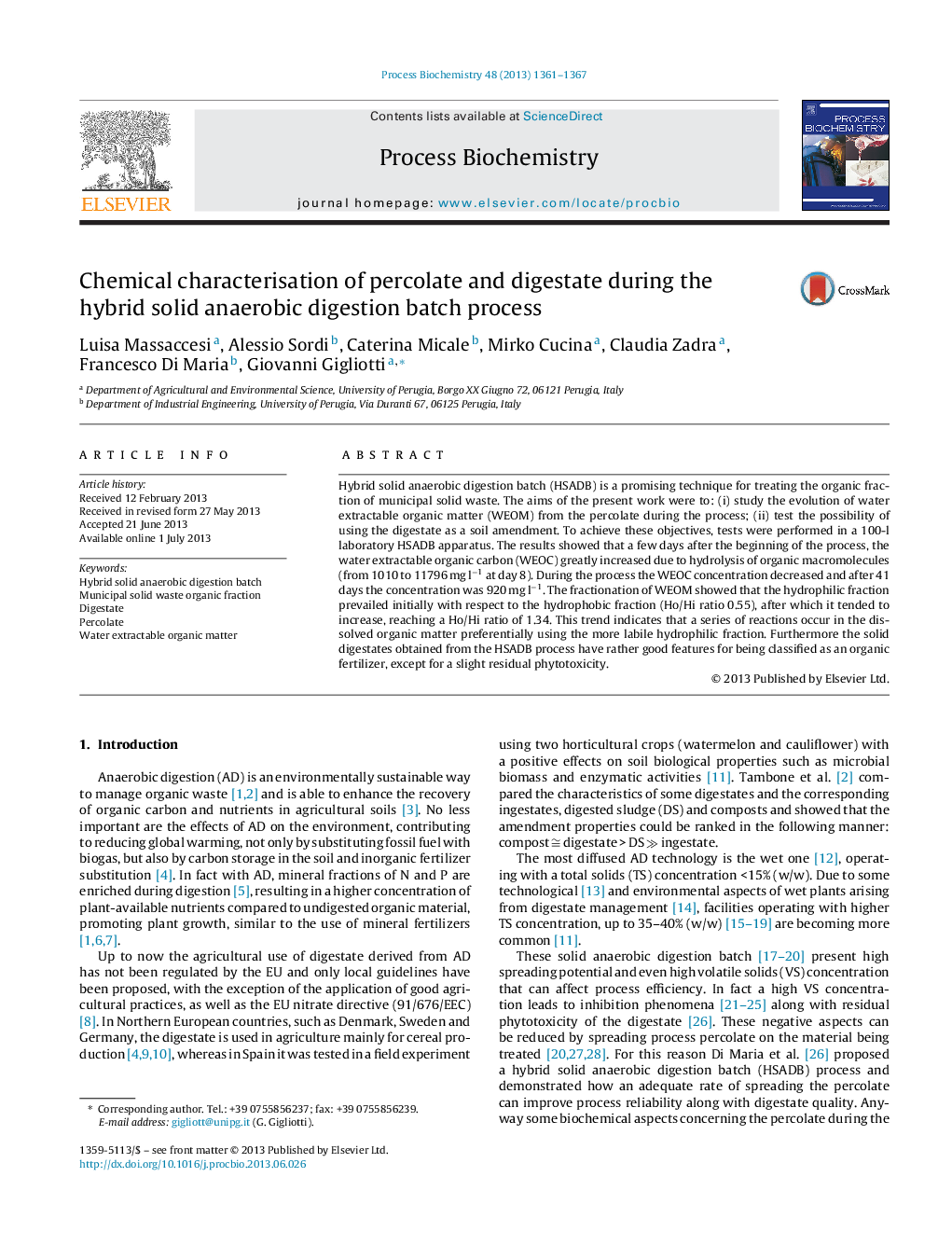| Article ID | Journal | Published Year | Pages | File Type |
|---|---|---|---|---|
| 34630 | Process Biochemistry | 2013 | 7 Pages |
•Study of HSADB process as a solution both for energy and materials recovery.•The periodically re-circulation of percolate reduces inhibition factors, as VFAs concentration.•At the beginning of the process chemical reactions involve the hydrophilic fraction of WEOM.•The digestate has a good agronomical quality, except for biological maturity.
Hybrid solid anaerobic digestion batch (HSADB) is a promising technique for treating the organic fraction of municipal solid waste. The aims of the present work were to: (i) study the evolution of water extractable organic matter (WEOM) from the percolate during the process; (ii) test the possibility of using the digestate as a soil amendment. To achieve these objectives, tests were performed in a 100-l laboratory HSADB apparatus. The results showed that a few days after the beginning of the process, the water extractable organic carbon (WEOC) greatly increased due to hydrolysis of organic macromolecules (from 1010 to 11796 mg l−1 at day 8). During the process the WEOC concentration decreased and after 41 days the concentration was 920 mg l−1. The fractionation of WEOM showed that the hydrophilic fraction prevailed initially with respect to the hydrophobic fraction (Ho/Hi ratio 0.55), after which it tended to increase, reaching a Ho/Hi ratio of 1.34. This trend indicates that a series of reactions occur in the dissolved organic matter preferentially using the more labile hydrophilic fraction. Furthermore the solid digestates obtained from the HSADB process have rather good features for being classified as an organic fertilizer, except for a slight residual phytotoxicity.
